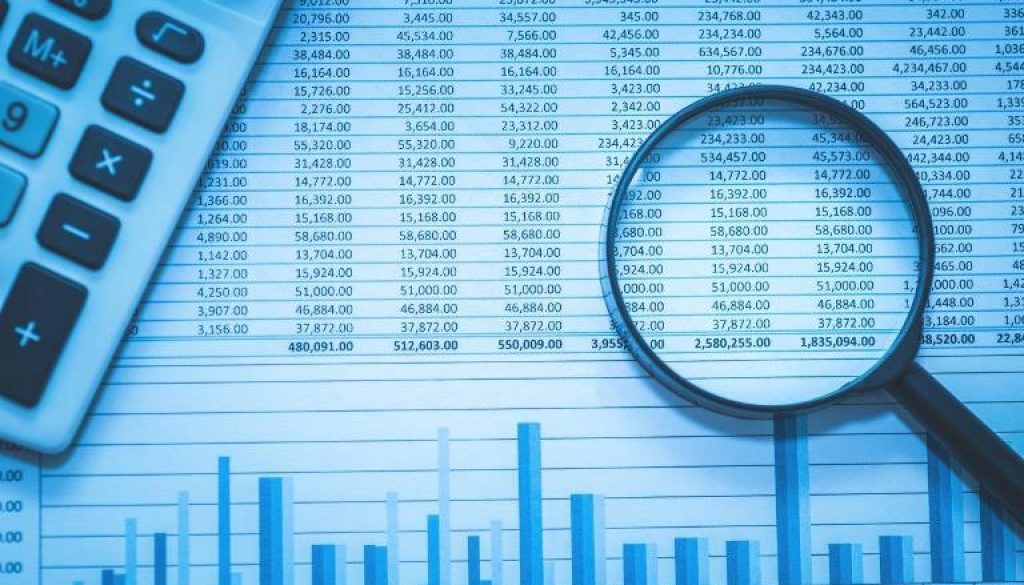BY DR SOHA MAAD
Introduction:
On the 3rd and 4th of February 2022, the Union of Arab Banks held its Conference on ABC, AMLA and MENA FATF Recommendations. The keynote speeches by distinguished members of United States Department of Treasury, Federal Reserve Bank of New York and Saudi Central Bank, and closing remarks of the Secretary General of the Union of Arab banks and Chairman of the US-MENA PSD initiative highlighted the importance for Arab banks to level up their forensic skills in order to combat fraud and corruption. In this article we present a brief overview of forensic science and forensic technologies and applications. Following this overview we briefly cover the main themes addressed in the Union of Arab ABC, AMLA and MENA FATF conference, and we focus on the important topic of forensic audit motivated in the closing session of the UAB conference. The case study of forensic audit of the central bank in Lebanon is considered. The article concludes with recommendations for Arab banks to build capacities and up skills in various forensic areas.
FORENSIC SCIENCE:
Forensic science, also known as criminalistics, is the application of science to criminal and civil laws, mainly on the criminal side during criminal investigation, as governed by the legal standards of admissible evidence and criminal procedure.
Forensic scientists collect, preserve, and analyze scientific evidence during the course of an investigation. While some forensic scientists travel to the scene of the crime to collect the evidence themselves, others occupy a laboratory role, performing analysis on objects brought to them by other individuals. Still others are involved in analysis of financial, banking, or other numerical data for use in financial crime investigation, and can be employed as consultants from private firms, academia, or as government employees.
FORENSIC TECHNOLOGIES and applications:
As technology infiltrates every aspect of our lives, it is no wonder that solving crimes has become almost futuristic in its advances. From retinal scanning to trace evidence chemistry, actual forensic technologies are so advanced at helping to solve crimes that they seem like something from a science-fiction thriller.
Forensic technology is a technology used for investigation and identification of facts surrounding a crime, sometimes using carbon related chemicals around the crime scene and advanced technologies like artificial intelligence (AI) and machine vision.
Forensic technology is one of the fastest-growing field in the U.S. One way to measure this is in the increased demand for forensic science technicians.
According to the Bureau of Labor Statistics BLS (2021), there will be a 16 percent increase in jobs for forensic science technicians between 2020 and 2030. The BLS indicates that this growth is due to new forensic science techniques that have increased the availability and reliability of objective forensic information. Courts and law enforcement agencies need to hire additional staff to use these techniques to analyze data for use in trials.
Latest advances in forensic technologies for 2022 compiled by forensic colleges include:
-
DNA Phenotyping: While DNA gathered from a crime scene can be matched to a suspect by comparing samples, DNA can also be used to determine what a suspect physically looks like.
-
Biosensors for Fingerprint Analysis: Like DNA, fingerprints found at a crime scene can be matched to a suspect by comparing them. Forensic scientists can now use biosensors to analyse the minute traces of bodily fluids found in fingerprints to identify the suspect. Data that can be detected include age, medications, gender, and lifestyle. Biosensors can also be used on other bodily fluids found at a crime scene.
-
Immunochromatography: Immunochromatography is a method to test for diseases by dropping a small sample onto a prepared test strip. Results are relatively quick, and common tests that use this technique include COVID, HIV, and even pregnancy tests. In forensics, immunochromatography tests are used to detect substances in subjects’ bodily fluids, such as drugs and medications.
-
Stable Isotopes of Water: Isotopes vary from atom to atom and can have a unique signature. Recent forensic developments have found that scientists can determine where the sample could have originated by isolating the isotopes in a water sample found on a suspect or victim.
-
Forensic Palynology: Forensic palynology is a relatively new area for forensic scientists. Palynology is the study of pollen, spores, grains, and seeds and can be used in forensics to identify a subject’s location.
-
Blockchain-Based Solutions and Cloud Forensics: Over 50 percent of personal and corporate data is now stored in the cloud, meaning on remote servers. As a result, digital forensic scientists developed methods for collecting, analysing, and evaluating data that has been collected from the cloud. Managing this data presents a number of security and privacy issues. To help protect the integrity of the data as well as maintain a custody chain, digital forensic scientists have begun to use blockchain technology as it is virtually impossible to tamper with.
-
Digital Vehicle Forensics: Vehicle forensics has typically been an area where investigators gather physical evidence, including fingerprints, fluid samples, and trace materials like dirt. Also, they can physically examine the car to determine how an accident, crash, or terrorist attack occurred. However, as vehicles have become more technologically sophisticated, it has opened the field of digital vehicle forensics where scientists and investigators can gather data such as recent destinations, typical routes, personal data, and favourite locations.
-
Social Network Forensics: Over 3.6 billion people are on social networks, and this number is projected to increase to 4.5 by 2025. Today the social media data for a particular subject can be daunting. Recently, to help evaluate this data, scientists have developed models for analysing the information gleaned from social networks. In order for automated data analysis to be accepted in court, it has to be based on models that are reproducible, explainable, and testable.
-
3D Technology: Forensic scientists often receive physical evidence that needs to be pieced back together. This is called physical fit and is a well-recognized method of determining that two pieces are from the same source. This evidence can be a variety of materials, and often they can be relatively fragile such as bones.
-
Drone Forensics: The increased popularity of these unmanned aerial vehicles has given criminals a new tool to smuggle drugs, perform illegal surveillance, and attack victims.
Advances in forensics technologies in 2021 and earlier include:
-
Laser Ablation Inductively Coupled Plasma Mass Spectrometry (LA-ICP-MS)
-
Alternative Light Photography
-
High-Speed Ballistics Photography
-
Video Spectral Comparator 2000
-
Digital
-
3D Forensic Facial Reconstruction
-
DNA Sequencer
-
Forensic Carbon-14 Dating
-
Magnetic Fingerprinting and Automated Fingerprint Identification (AFIS
-
Link Analysis Software for Forensic Accountants
Forensic related rules and regulations:
In the United States, Forensic science is a critical element of the criminal justice system. Forensic scientists examine and analyse evidence from crime scenes and elsewhere to develop objective findings that can assist in the investigation and prosecution of perpetrators of crime or absolve an innocent person from suspicion.
The United States Department of Justice maintains forensic laboratories at the Bureau of Alcohol, Tobacco, Firearms, and Explosives, the Drug Enforcement Administration, and the Federal Bureau of Investigation. The Department, through the National Institute of Justice, is a sponsor of cutting-edge research. Its labs serve as a model for government forensic agencies at the federal, state and local levels. The Department strives to set the global standard for excellence in forensic science and to advance the practice and use of forensic science by the broader community.
The United States Department of Justice is in the process of developing guidance documents governing the testimony and reports of its forensic experts. These documents, known as “Uniform Language for Testimony and Reports” or ULTR documents, are designed to provide guidance on the submission of scientific statements by the Department’s forensic examiners when drafting reports or testifying.
Testimony monitoring is a quality assurance mechanism to ensure testimony is consistent with mandatory laboratory policies and procedures, properly qualified and appropriately communicated, and in conformity with any applicable ULTR
The Department posts quality management system documents online to promote the scientific value of transparency and enhance knowledge of Department forensic policies and practices by the stakeholders. These documents include quality assurance measures, laboratory policies, and standard operating procedures for testing and analysis, and summaries of internal validation studies for forensic methods and techniques that are currently used by Department labs.
In January 2017, the Department issued Supplemental Guidance for Prosecutors Regarding Criminal Discovery Involving Forensic Evidence. The Supplemental Guidance provided new Department-wide guidance on criminal discovery in cases with forensic evidence.
The United States Department of Justice has created a working group made up of state and local forensic science practitioners and a small number of researchers to advance coordination and collaboration. The National Institute of Justice (NIJ), in partnership with the Forensic Technology Center of Excellence at RTI International, has formed the Forensic Laboratory Needs – Technology Working Group (FLN-TWG).
forensic audit:
A forensic audit is an analysis and review of the financial records of a company or person to extract facts, which can be used in a court of law. Forensic auditing is a speciality in the accounting industry, and most major accounting firms have a department forensic auditing. Forensic audits include the experience in accounting and auditing practices as well as expert knowledge of forensic audit’s legal framework.
Forensic audits cover a large spectrum of investigative activities. There may be a forensic audit to prosecute a party for fraud, embezzlement or other financial crimes. The auditor may be called in during the process of a forensic audit to serve as an expert witness during trial proceedings. Forensic audits could also include situations that do not involve financial fraud, such as bankruptcy filing disputes, closures of businesses, and divorces.
Forensic audit investigations may expose, or confirm, various kinds of illegal activities. Normally, instead of a normal audit, a forensic audit is used if there is a possibility that the evidence gathered would be used in court.
The forensic audit process is similar to a traditional financial audit — planning, gathering evidence, and writing a report — with the additional step of a possible appearance in court. The lawyers on both sides offer evidence that the crime is either discovered or disproved, which decides the harm sustained. They explain their conclusions to the defendant should the case go to trial before the judge.
Forensic Audit Steps:
A forensic audit comprises the following steps:
· Planning the Investigation: The forensic auditor and the team will plan their investigation in order to meet their objectives.
· Collecting Evidence: The evidence gathered should be sufficient to prove in court the identity of the fraudster(s), reveal the details of the fraud scheme and document the financial loss suffered and the parties affected by the fraud.
· Reporting: A forensic audit will need a written report on the crime to be given to the client, so that if they desire, they can continue to file a legal case.
· Court Proceedings: During court proceedings, the forensic investigator must be present to clarify the evidence collected and how the suspect(s) were found by the team.
As such forensic audit is used to examine and evaluate a firm’s or individual’s financial records to derive evidence used in a court of law or legal proceeding. Forensic auditing is a specialization within accounting, and most large accounting firms have a forensic auditing department. Forensic audits require accounting and auditing procedures and expert knowledge about the legal framework of such an audit.
Key takeaways
· A forensic audit is an examination and evaluation of a firm’s or individual’s financial records.
· During a forensic audit, an auditor seeks to derive evidence that could potentially be used in court.
· A forensic audit is used to uncover criminal behavior such as fraud or embezzlement.
· When you are a forensic auditor, you specialize in a particular brand of accounting. Smaller firms may not have a forensic auditor on the payroll, but most large, commercial accounting firms have forensic auditing departments.
· Forensic audit investigations can uncover or confirm various types of illegal activities. Usually, a forensic audit is chosen instead of a regular audit if there’s a chance that the evidence collected would be used in court.
Forensic Audit law:
Forensic audits are presented as evidence by a prosecutor or by a lawyer representing an interested party. Because finance is a complex discipline, the jargon used by forensic auditors to describe a company’s financial position is often highly precise. This either requires a prosecutor or lawyer to call upon expert witnesses to explain the significance of the audit in layman’s terms or to have the auditor do so himself or herself in order to build a case.
Glossary of important forensic terms
· Forensic Accounting: Forensic accounting utilizes accounting, auditing, and investigative skills to conduct an examination into a company or individual’s financial statements.
· Master Analyst in Financial Forensics (MAFF): A Master Analyst in Financial Forensics (MAFF) is a specialized accounting credential certifying expertise in identifying financial crimes.
· Fraud: Fraud, in a general sense, is purposeful deceit designed to provide the perpetrator with unlawful gain or to deny a right to a victim.
· Fiduciary Negligence: Fiduciary negligence is professional malpractice when a person fails to honour their fiduciary obligations and responsibilities.
· Traveling Auditor: A traveling auditor collects and analyses accounting data to determine the financial status of a company.
· Corporate Accountability: Accountability is the acceptance of responsibility towards other parties.
UNION OF ARAB BANKS EVENT:
The Union of Arab Banks’ (UAB) Conference on ABC, AMLA and MENA FATF Recommendations was held in 3-4 February, 2022 as a hybrid event. The keynote speeches and opening remarks by Wissam H. Fattouh, Secretary General, Union of Arab Banks, H.E. Mrs. Elizabeth Rosenberg, Assistant Secretary for Terrorist Financing, U.S. Department of Treasury, Mr. Michael Held, General Counsel and Executive Vice President, Federal Reserve Bank of New York (NYFED); and Dr. Fahad Ibrahim Alshathri, Deputy Governor for Supervision, Saudi Central Bank (SAMA), motivated the importance for Arab banks to up level their skills in various forensic areas to combat fraud and corruption.
The event focused on key topics including:
· Strengthening Anti-Bribery, Corruption Practices and mitigating Sanctions
· Anti-bribery and Corruption (ABC), a growing pillar of financial crimes mitigation strategies
· Understanding the complexity of sanctions on a global and regional basis
· Continuing the integration of sanctions and AML regimes
· Increasing the need for shared financial crime risk management models
· Identifying, investigating, managing, monitoring & reporting vulnerable corruption areas
· MENA FATF – Scope, Objective, Methodologies and Recommendations
· The US Anti-Money Laundering Act (AMLA) of 2020 & AMLD6
Closing Remarks by Dr. Muhammad Baasiri, Chairman of the US-MENA PSD initiative emphasized the importance of forensic audit in Arab banks.
Forensic audit in Lebanon:
Lebanon is resuming a long-awaited forensic audit to shed light on the financial disaster that mired the country in a crippling economic collapse.
Lebanese President Michel Aoun signed a decree on September 1, 2021, to allocate 4.9 billion Lebanese lira (€2.7 million, $3.2 million) to global professional services firm Alvarez & Marsal (A&M) with the purpose of resuming an audit of Lebanon’s central bank (Banque Du Liban, BDL).
A&M ceased the forensic audit in November 2020 due to obstruction and lack of cooperation from the BDL, with the latter hiding behind a banking secrecy law. The Lebanese Parliament lifted the law with respect to BDL only in December 2020, following pressure from President Aoun.
In August 2021, the Ministry of Finance (MOF) paid A&M a break fee of $150,000, according to local newspaper The Daily Star.
To date, nobody has been held accountable for the economic collapse in Lebanon. The forensic audit can potentially help clarify what exactly happened to the Lebanese economy and who is to be prosecuted.
Unlike a financial audit, the forensic audit is a much deeper analysis that aims to discover illegal operations, fraud, forgery, embezzlement of public funds and transfers outside the country.
The forensic audit of BDL is vital for the future of Lebanon, it allows the country to assess economic and financial damages. It has an essential role in uncovering systematic corruption and holding individuals accountable for mismanagement and wrongdoing. It is functional as a prerequisite to get access to international aid and regain the trust of private investors. However, the audit faces several hurdles that may threaten its progress.
While the forensic audit is just one of a laundry list of necessary reforms and accountability measures for Lebanon to adopt, it is among the most crucial for a number of reasons.
A forensic audit of the Central Bank would allow Lebanon to accurately assess its economic and financial damages that left the country on life-support. The audit would also play a key role in uncovering systematic corruption and efforts for accountability.
Uncovering transactional information through the forensic audit—and disclosing data about financial losses, looted and mismanaged funds, and the benefactors and culprits behind these malicious practices—can help with all of the above.
The main obstacle to conducting the forensic audit is Lebanon’s banking secrecy laws—which bind banks to “absolute secrecy” of the personal information, assets, and other information of their clients and their accounts. The forensic audit of the Central Bank and other state entities brings these laws back into the forefront, which today appear to be more of an obstacle to justice than an asset to the country’s decimated economy.
After their passage in 1956, Lebanon’s secrecy laws attracted money from the region’s wealthiest, turning the tiny country into a banking hub—long dubbed the “Switzerland of the Middle East.” Lebanese banks became the ideal place to stash wealth secretly and safely, making the banking sector a key economic pillar for the country.
The legal framework that once brought in copious wealth into the country has however turned into a major obstacle in achieving meaningful anti-corruption and transparency reforms. Though economic experts and even some officials have argued that this is a misinterpretation, these laws have been used as an excuse to decline to disclose key financial data for the forensic audit.
In fact, the Central Bank declined to disclose 57 percent of the requested documents for the forensic audit, citing banking secrecy laws.
The international community has given Lebanon a list of economic and administrative reforms that it says are crucial to making the country’s economy viable again, including a forensic audit of the Central Bank.
Building forensic capacities for Arab Banks:
To keep pace with modern management concepts, multi-levels and ownership separation from management there is an urgent need for strong internal and external auditing systems so as to maintain and protect public finance as a goal for all countries due to effect of their finance and property with regard to their economic position. Therefore, internal and external public financial auditing system adopted within Arab banks has a clear and effective impact in improving public finance management.
Arab banks should up level their skills in various forensic areas to combat fraud and corruption. Suggested roadmap to achieve this aim involve the following steps:
-
Supporting innovation in forensic technologies and applications
-
Raising internal and external forensic audit control
-
Devising rules and regulations in various forensic related areas
-
Leading research and development in forensic studies and education
-
Applying forensic audit to wealth of data generated and gathered by banks
-
Defining goals, strategies, and policies for forensic conduct and activities
-
Ensuring global positioning in the emerging field of forensic science
-
Developing mobile apps that can be used in forensic activities
-
Adopting worldwide forensic standards
-
Modernization of financial system to catch up with advanced forensic technologies and applications
-
Addressing global need and the need of the wider world population to fight corruption and enforce fair and equitable practices
-
Enhancing international money transfer system and combatting fraud and money laundry
-
Developing a forensic banking working model
-
Developing advanced forensic technology standards
-
Strengthening forensic audit in Arab banks
REFERENCES
forensicscolleges , Wikipedia, Investopedia, learnxrf.com, igi-global dictionary, United States Department of Justice publications and website, Cleartax India, The Law Dictionary, Black’s Law Dictionary Free Online Legal Dictionary 2nd Ed, Union of Arab Banks Conference on ABC, AMLA and MENA FATF Recommendations held on February 2022 – Keynote Speeches and Opening Remarks of Wissam H. Fattouh, Secretary General, Union of Arab Banks, H.E. Mrs. Elizabeth Rosenberg, Assistant Secretary for Terrorist Financing, U.S. Department of Treasury, Mr. Michael Held, General Counsel and Executive Vice President, Federal Reserve Bank of New York (NYFED), Dr. Fahad Ibrahim Alshathri, Deputy Governor for Supervision, Saudi Central Bank (SAMA), closing remarks of Dr. Muhammad Baasiri, Chairman of the US-MENA PSD initiative), DW, The Tahrir Institute for Middle East Peace – Kareem Chehayeb, Aya-Maria Wakim (LAU), RESEARCH GATE, .eurosai



